History at Penn
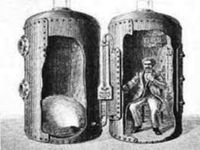
Origin of Hyperbaric Medicine
The first documented use of a medical hyperbaric chamber was in 1662 when Dr. Nathan Henshaw created a chamber known as a "domicilium." In the years that followed, many different types of chambers were developed for the treatment of chronic diseases, complications sustained by workers in pressured tunnels (caissons), and scuba diving injuries. In 1967, leaders in the field created the Undersea and Hyperbaric Medical Society (UHMS) to further scientific discover and ensure safety standards.
Penn: Our Founder

In 1968, the Division of Undersea and Hyperbaric Medicine was founded by Dr. Christian J. Lambertsen under the Institute for Environmental Medicine at the University of Pennsylvania. Dr. Lambertsen was a primary inventor of SCUBA and developed the U.S. Navy frogmen's rebreathers for underwater warfare. He served in the U.S. Army Medical Corps and later became a Distinguished Emeritus Professor at the University of Pennsylvania. His accomplishments were vast and included key partnerships with NASA, the Navy, the Air Force, NOAA, and the Smithsonian Institution. Learn more about Dr. Lambertsen: U.S. Army Special Operations History.
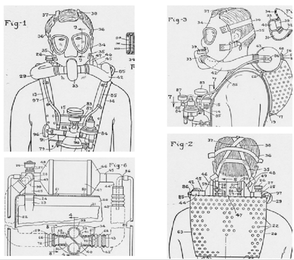
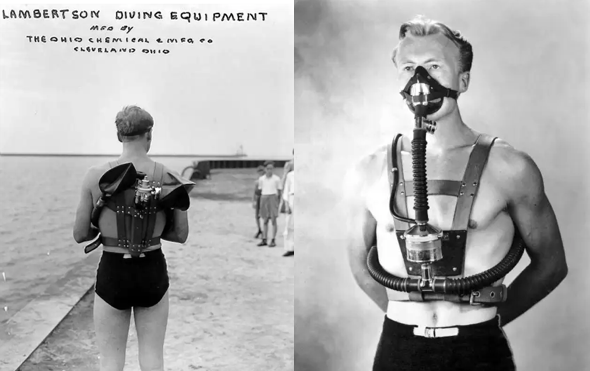
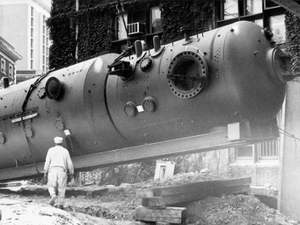
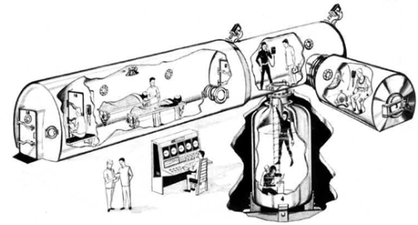
The Chamber
Penn's multiplace hyperbaric chamber was constructed over 50 years ago. Multiple connected compartments allowed the team to treat patients simultaneously. An additional connected compartment in the basement was filled with water, which allowed researchers to conduct diving simulations. The chamber was capable of reaching a maximum depth of 1,800 feet as well as simulating the "hypobaric" environment experienced in space.
Research and Growth

In the 1970s, Dr. Lambertsen partnered with NASA to conduct research protocols that tested human tolerance of various gases at impressive depths. This series of "Predictive Studies" allowed researchers to better understand the effects of oxygen on the lungs and brain, including ways to mitigate adverse effects. Over the years, Penn investigated the use of hyperbaric oxygen to treat other conditions, such as carbon monoxide toxicity and injuries due to radiation therapy. In the 1980s, Dr. Stephen Thom joined the department and served as the Chief of Hyperbaric Medicine. His pivotal research provided key insights into the pathophysiology behind carbon monoxide poisoning and the role of microparticles.
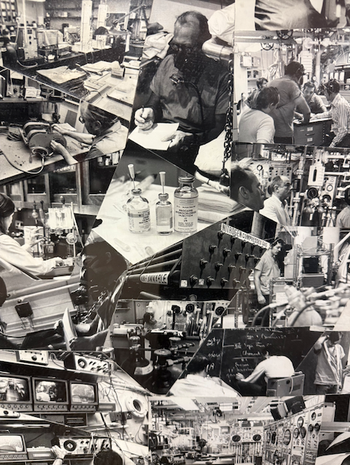
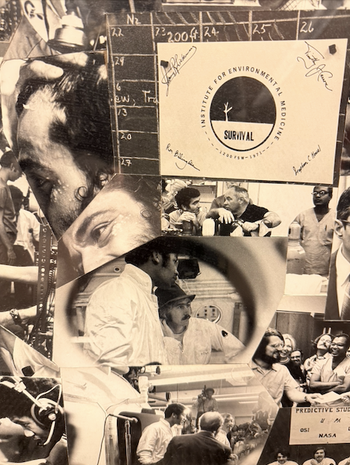
Leading the Way

Over the years, Penn has continued to focus on clinical and academic excellence. This included the development of an ACGME-approved fellowship in Undersea and Hyperbaric Medicine, the expansion of the Penn Wound Care Center with two monoplace hyperbaric chambers, and ongoing community involvement with local learners.
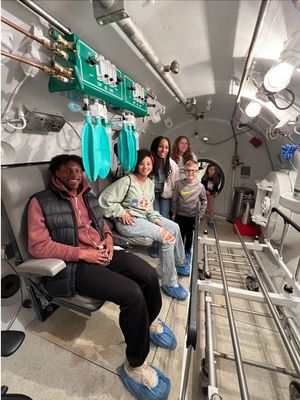
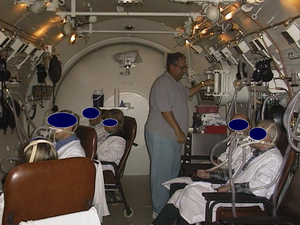
References
- https://www.intechopen.com/chapters/66258
- Vann RD. Lambertsen and O2: beginnings of operational physiology. Undersea Hyperb Med. 2004 Spring;31(1):21-31. PMID: 15233157.
- https://almanac.upenn.edu/archive/volumes/v57/n23/obit.html
- https://www.cia.gov/stories/story/christian-lambertsen-and-the-secret-story-behind-scuba/
- arsof-history.org/lambertsen/index.html
- https://www.episcopalacademy.org/post-details/~board/school-news/post/students-visit-hyperbaric-chamber-to-gather-research

